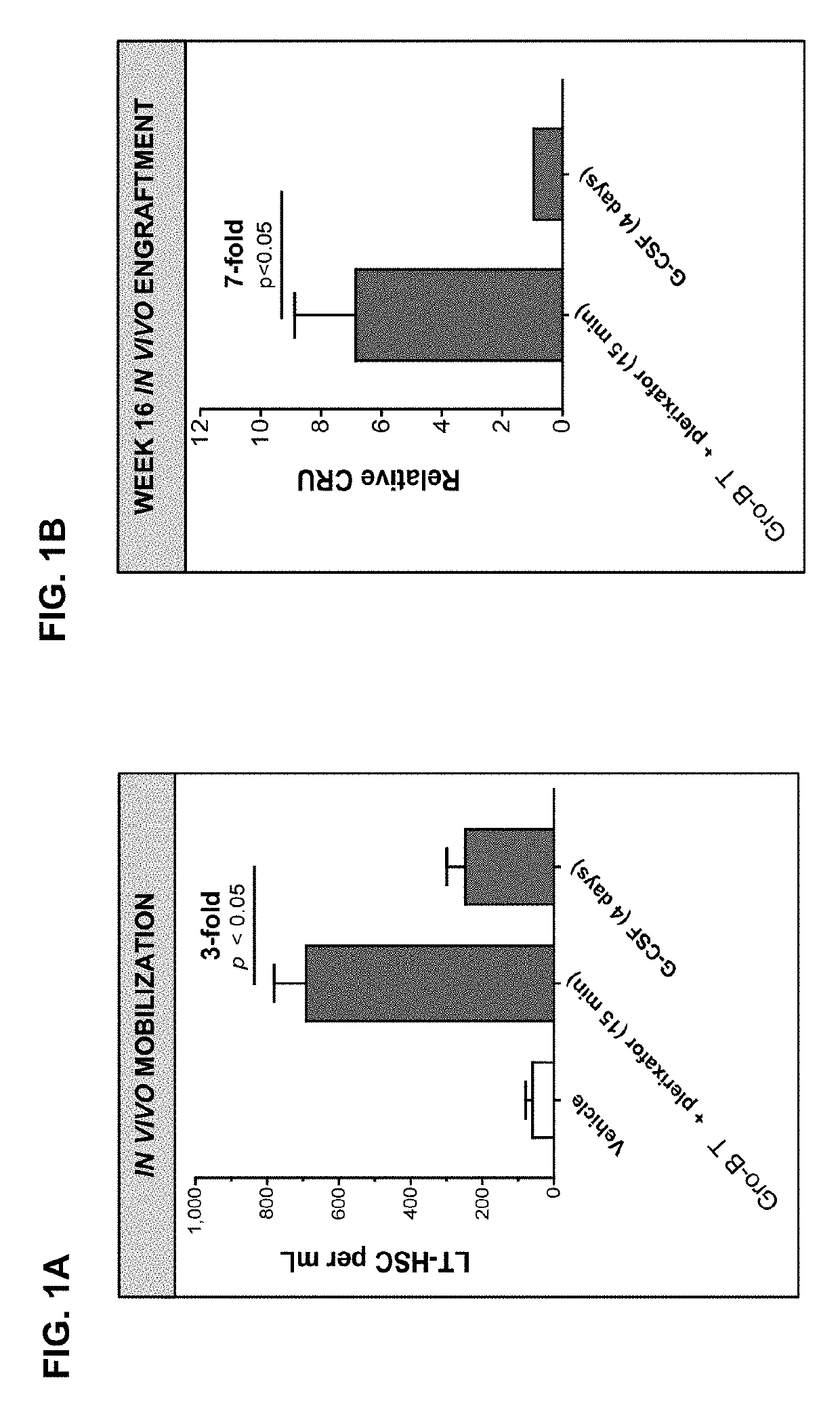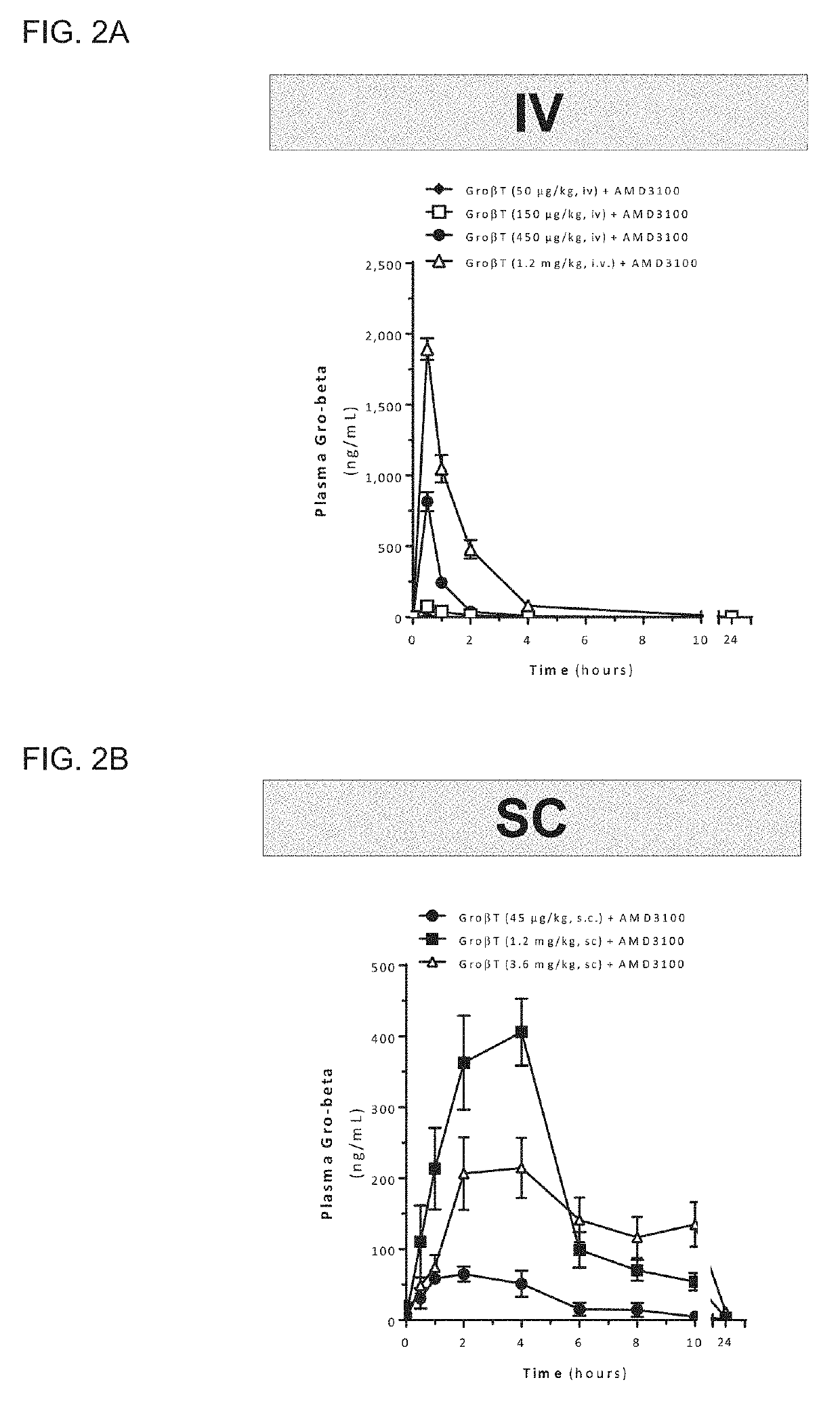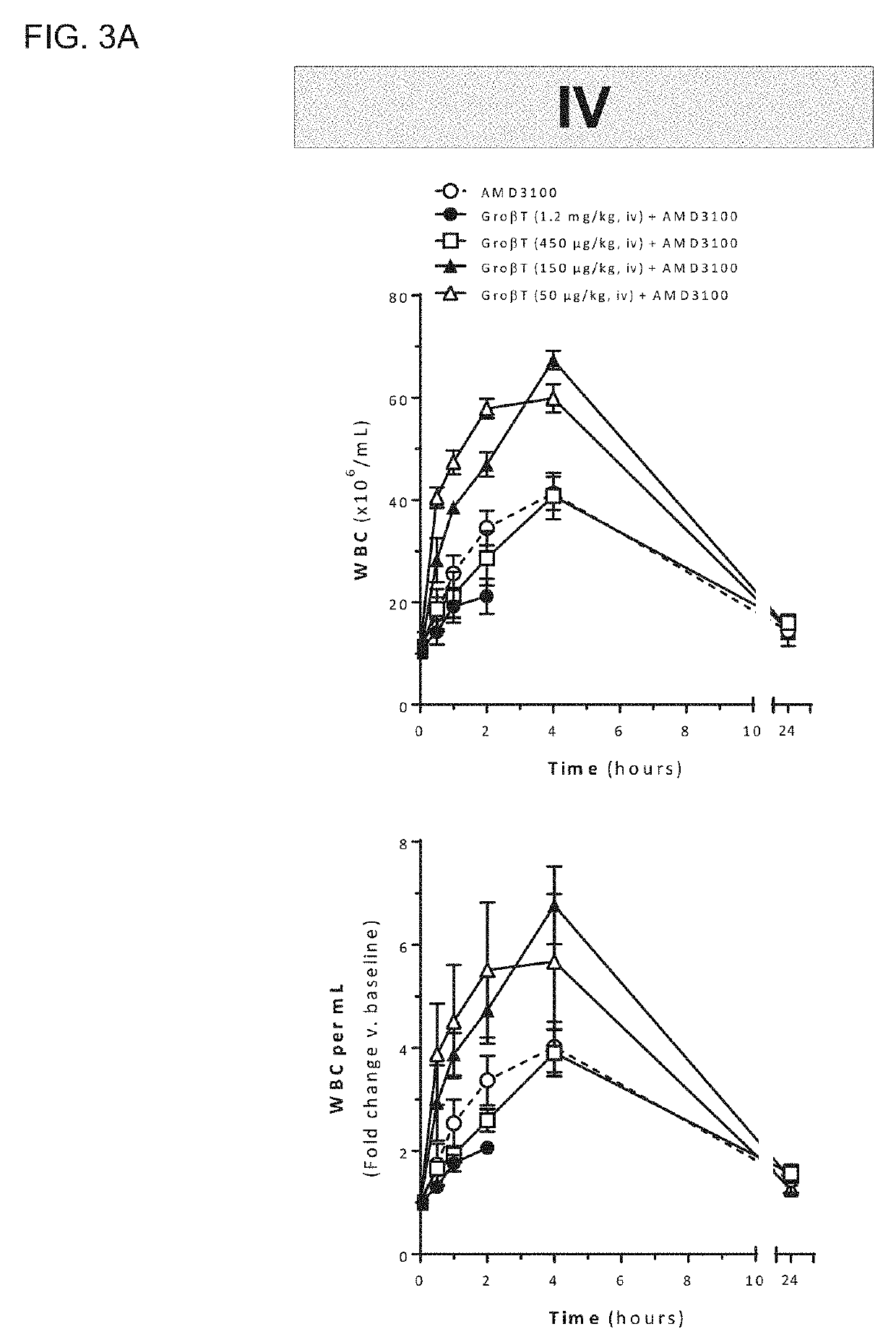Dosing regimens for the mobilization of hematopoietic stem and progenitor cells
a technology of hematopoietic stem cells and mobilization regimens, applied in the direction of drug compositions, peptide/protein ingredients, immunological disorders, etc., can solve the problems of difficulty in releasing hematopoietic stem cells, and achieve the effect of reducing the mobilization of other cells
- Summary
- Abstract
- Description
- Claims
- Application Information
AI Technical Summary
Benefits of technology
Problems solved by technology
Method used
Image
Examples
example 1
ts of Gro-β T on the Mobilization of Hematopoietic Stem Cells in Mice and Rhesus Monkeys
[0292]Mobilized peripheral blood grafts are currently the predominant source of hematopoietic stem and progenitor cells (HSPC) for both autologous and allogeneic transplantation. The most common clinical hematopoietic stem cell mobilization protocol is five days of Filgrastim (G-CSF). This regimen requires daily injections, has been associated with bone pain and often results in unpredictably low yields. A rapid mobilization method that ideally only required a single treatment and had robust and predictable kinetics would be a significant improvement over the current standard of care. In mice, a unique CXCR2 agonist, T, induces rapid mobilization of stem and progenitor cells 15 minutes after a single injection. When co-administered with plerixafor (AMD3100), an inhibitor of CXCR4, a synergistic increase in mobilization results, and grafts are enriched in highly engraftable, long-term hematopoieti...
example 2
ng Whether a Population of Hematopoietic Stem Cells Mobilized with a CXCR2 Agonist and / or a CXCR4 Antagonist is Suitable for Ex Vivo Expansion and / or Therapeutic Use
[0304]Using the compositions and methods described herein, a practitioner of skill in the art may mobilize a population of hematopoietic stem or progenitor cells in a mammalian donor, such as a human donor. In some embodiments, the practitioner may administer a CXCR4 antagonist and a CXCR2 agonist in amounts sufficient to engender the release of a population of a population of hematopoietic stem cells into circulating peripheral blood while reducing the mobilization of other cells of the hematopoietic lineage, such as leukocytes, neutrophils, lymphocytes, and monocytes.
[0305]When administering a CXCR4 antagonist in combination with a CXCR2 agonist, the physician may administer the two agents to the donor simultaneously or at different times. In some embodiments, the CXCR4 antagonist may be administered to the donor from ...
example 3
of a Hematologic Disorder by Administration of a Hematopoietic Stem or Progenitor Cell Graft
[0309]Using the compositions and methods described herein, a practitioner of skill in the art may treat a stem cell disorder, such as a hematologic pathology described herein, by administering to a patient a hematopoietic stem or progenitor cell graft. For example, a practitioner may identify a human donor of hematopoietic stem or progenitor cells as likely to respond to a mobilization regimen, as outlined in Example 1, and may subsequently mobilize a population of hematopoietic stem or progenitor cells accordingly, for example, as set forth in Example 2. Following mobilization, the physician may isolate a population of hematopoietic stem or progenitor cells from the donor. Isolation of the cells may commence, for example, from about 10 minutes to about 60 minutes following completion of the administration of a CXCR4 antagonist and / or a CXCR2 agonist, such as from about 15 minutes to about 55...
PUM
| Property | Measurement | Unit |
|---|---|---|
| Dimensionless property | aaaaa | aaaaa |
| Dimensionless property | aaaaa | aaaaa |
| Dimensionless property | aaaaa | aaaaa |
Abstract
Description
Claims
Application Information
 Login to View More
Login to View More - R&D
- Intellectual Property
- Life Sciences
- Materials
- Tech Scout
- Unparalleled Data Quality
- Higher Quality Content
- 60% Fewer Hallucinations
Browse by: Latest US Patents, China's latest patents, Technical Efficacy Thesaurus, Application Domain, Technology Topic, Popular Technical Reports.
© 2025 PatSnap. All rights reserved.Legal|Privacy policy|Modern Slavery Act Transparency Statement|Sitemap|About US| Contact US: help@patsnap.com



